DRIVING TIPS
Driving at Night — Our Top Tips for Arriving Safely
Many people find driving at night difficult. Government statistics back this up, with the Department for Transport claiming that the largest number of road fatalities occur between 9pm and 4am. This is in spite of the fact that the UK’s roads are at their quietest at night-time.
With this in mind, taking the right approach to driving after dark is essential. Even if you’re a confident driver, you might still be making mistakes that could end up putting lives in danger. So stay safe and read on for our top tips for night-time driving.
Check your eyes.
Just like maintaining your car, getting your eyes tested regularly is essential for staying in good health. Taking good care of your eyes is also essential for driving safely.
Good eyesight is even more important for driving at night, when visibility is reduced significantly. As people grow older, their eyesight typically deteriorates. Drivers over the age of 50 often need considerably more light to see clearly than those under 30. For this reason, many older drivers find it harder to distinguish potential hazards on the roads.
Older drivers are also more likely to find themselves being being dazzled by dipped headlights and streetlights. Some also see halos around light sources at night. If you notice a persistent problem with these issues, it’s important you check with your optician before driving again after dark. In many cases, the root cause of the problem will be easily treatable.
Clean your windscreen.
Dirt that you might even not notice during the day can become illuminated by headlights after dark. Make life easier for yourself by keeping the glass in your car clean. Doing this will also help reduce condensation.
Slow down.
Remember that the speed limit isn’t a target to be hit at all costs. By slowing down you’ll have more time to react if something goes wrong. Driving more slowly will also give your eyes more time to adjust to changing light conditions as the night draws in.
Resist the urge to slow down every time you meet a pair of oncoming headlights, however. Aim to maintain a safe and steady speed you feel comfortable with rather than continuously speeding up and slowing down.
Take a break.
Our bodies are naturally programmed to begin a sleep cycle at night time. This can lead to drowsiness as the night grows longer. Driving when tired can be incredibly dangerous. According to the RAC up to 20% of serious road accidents in the UK can be attributed to drivers falling asleep behind the wheel.
If you feel your eyelids begin to droop, pull over and take a nap. Resting for just ten to 15 minutes can make a huge difference to your energy and concentration levels.
If you need to arrive somewhere on time late at night, allow yourself more time to travel so that you can take a break if you need to. Failing that, anybody worth risking your life for will understand if you arrive a little late.
Lights.
It’s illegal to drive in the UK without fully functioning lights on your car. If your lights aren’t working properly, it goes without saying that it will be harder for you to see where you’re going and for others to see you.
Always check your lights — front and back — before driving at night.
If your journey begins before darkness sets in be sure to turn your dipped headlights on before sunset. If you’re an early riser, keep your dipped headlights on for at an hour after sunrise. Certain weather conditions might require you to switch them on sooner and leave them on for longer, of course.
Make sure you never use your high beam when driving with traffic in front of you on either side of the road. These bright lights are designed to give better illumination of the road ahead but they can also dazzle other drivers, which is dangerous for both of you.
If you find yourself being dazzled — do not look at the high beam lights. Instead, focus on the left-hand kerb until the vehicle has passed. Try to maintain a safe, consistent speed as sudden changes in speed at night-time are far more dangerous.
To avoid being dazzled by drivers behind you, flip the switch at the bottom of your rear view mirror to tilt it. This reflects excess light away from your eyes, whilst still allowing you to see what’s behind.
Conclusion.
We’ve explored some of the reasons that driving at night is more dangerous than daytime driving and also looked at simple steps that can be taken to reduce the risk of incidents after dark.
If you’re a recently qualified driver, you might be feeling nervous about driving in the dark. Our Pass Plus course includes a night-time driving module, which will help to build your confidence. More experienced drivers might want to learn more about our Advanced Driving Lessons, which can be built around your needs to include plenty of night driving tuition.


